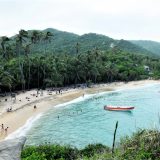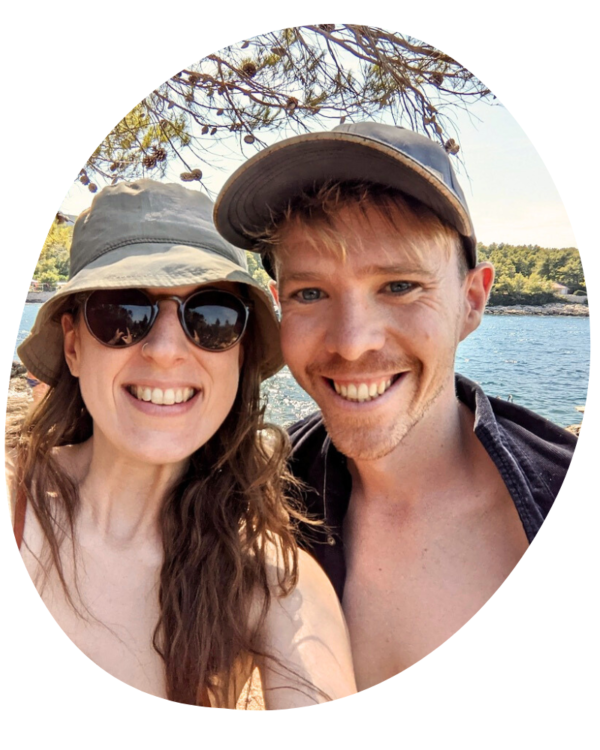How To Explore the Amazon in Ecuador
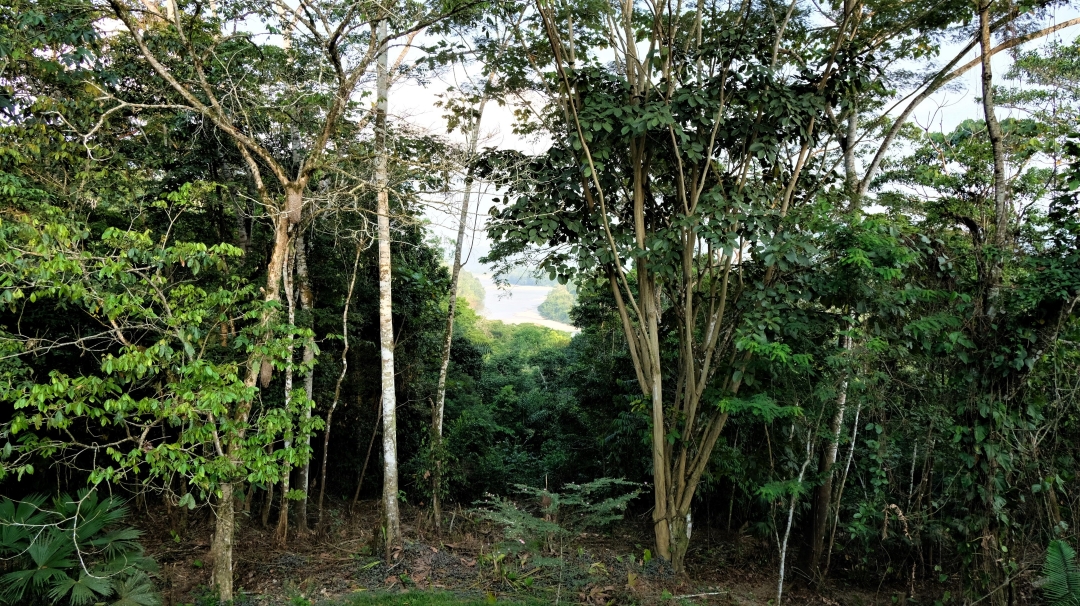
The Amazon rainforest in Ecuador is an adventure you’ll never forget. Take the spiralling mountain road from Quito into the deep, lush Amazon rainforest for a weekend or longer. Lace up your walking boots and find yourself immersed in dense vegetation, kapok leaves fringing the clouded sky. Find yourself surrounded by rainforest, abuzz with the sounds of wild parakeets, howler monkeys and tanager birds.
Adventure Activities in the Amazon Rainforest in Ecuador
We jumped into the Amazon rainforest for a weekend stay at Gaia Lodge and joined their 3 days/2 nights itinerary. Activities in the Amazon are plentiful and there’s more than enough to keep you occupied for at least 3 days but up to a week or more. I’d recommend reading the set itineraries ahead of time to see how many days you need to do all the Amazon rainforest activities on your wish list. Here are our highlights from our weekend in the Amazon:
Canoeing Along the Rio Napo
There’s nothing else like a canoe ride along one of the Amazon’s wide rivers. Flanked by dense jungle on either side, a canoe ride through the Amazon gives you ample chance to spot wildlife amongst the sprawling branches. You’ll have a guide with you who knows the favourite spots of the local wildlife and to help point out those hard-to-see animals.
During our motorised canoe ride down the Rio Napo and its tributaries, we saw three species of monkey – woolly monkeys, spider monkeys and squirrel monkeys. A flock of yellow-tailed birds flew overhead in a pointed arrow as we sailed along the waters. The river is laden with caiman but locals say you won’t see these crocs lurking during the day, as they only hunt along the river banks at night.
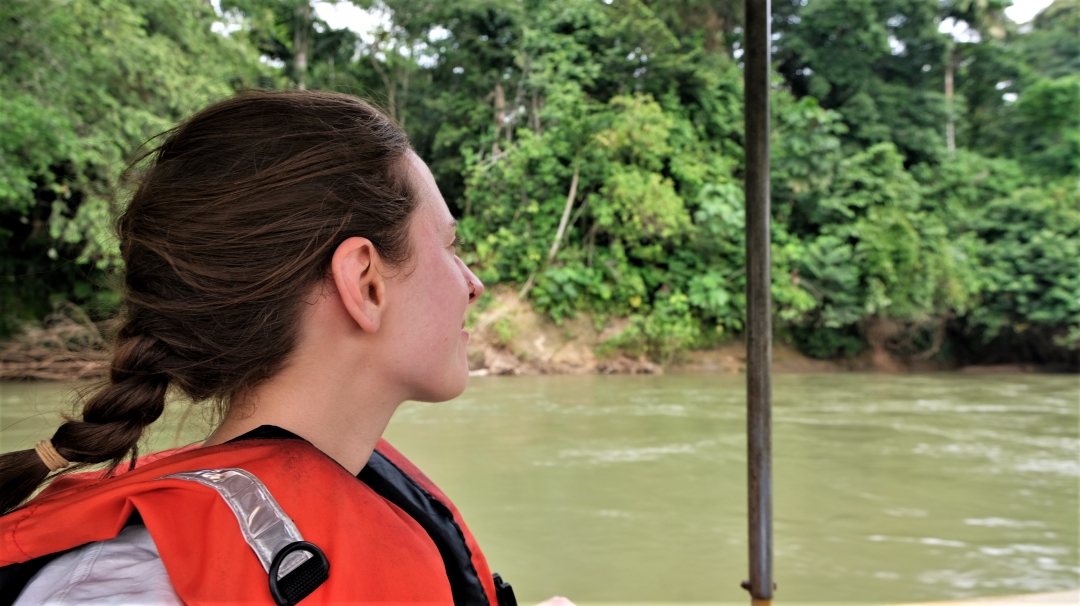
Hiking in Ecuador’s Amazon Rainforest
The Ecuadorian Amazon rainforest is hot and humid, but the best way to truly feel like an explorer is to go on foot. This region is one of the most bio-diverse parts of the world and a hike through the rainforest gives you the opportunity to see the flora and fauna up-close.
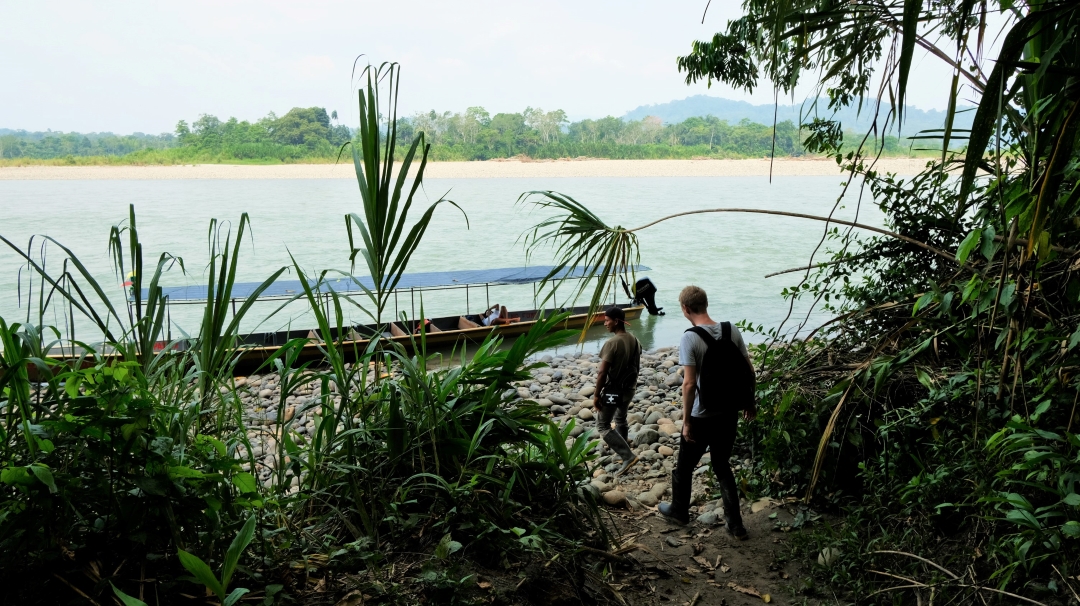
Community Tourism Visit to the Kichwa
Where the Napo and Arajuno rivers meet is Anaconda Island, inhabited by local Kichwa indigenous families. Here you can learn about local customs and take a swig of chicha, a traditional white, milky beverage made from yuca. It’s got a fermented, slightly sour taste to it, not dissimilar from kefir.
We (unsuccessfully) tried out using a blowgun for the first time. But we were suitably impressed with our guide’s ability to hit the wooden target! A short walk from the house where we tried chicha, we followed a jungle path to the swamps where we saw caimans, as well as a variety of plants and pink bananas!
Community Tourism Visit to Ceramic Makers
In the nearby town of Ahuano, local craft makers practise a variety of different handicrafts. We visited the family of ceramic makers to see their pottery in action. We were amazed by the skill as we watched pots and bowls being made and shaped by hand! Visiting community projects like this one is a great way to contribute and support locals through purchasing a small handicraft.
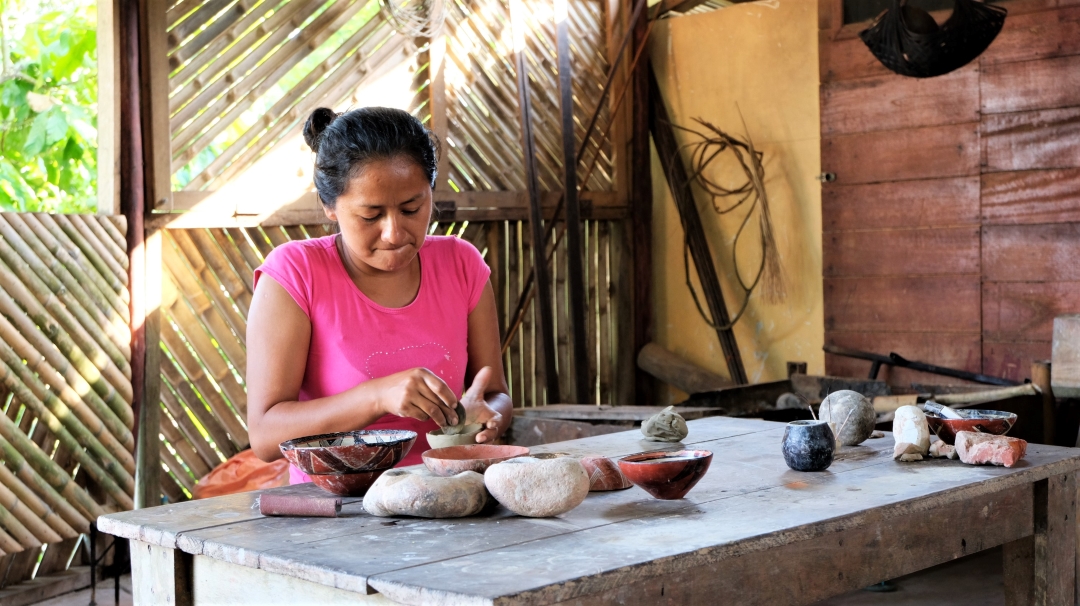
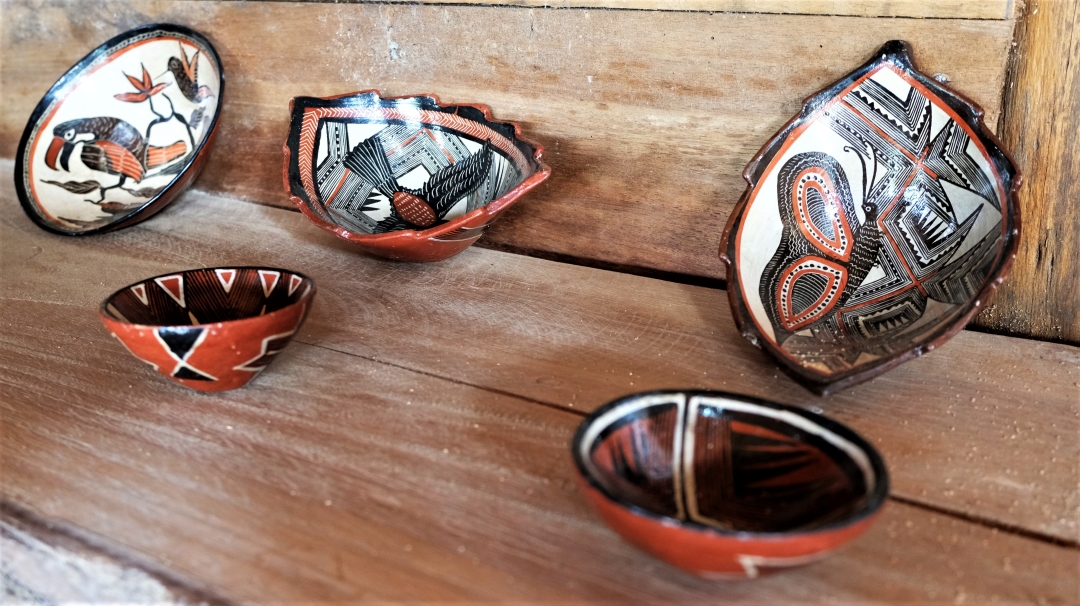
Butterfly Farm in Ahuano
There’s a gorgeous butterfly house located in the town of Ahuanco with 20+ species of local butterfly. It’s by far the best butterfly house we’ve ever visited, teeming with mariposas of all kinds. This was an unexpected but very pleasant addition to our Amazon itinerary.
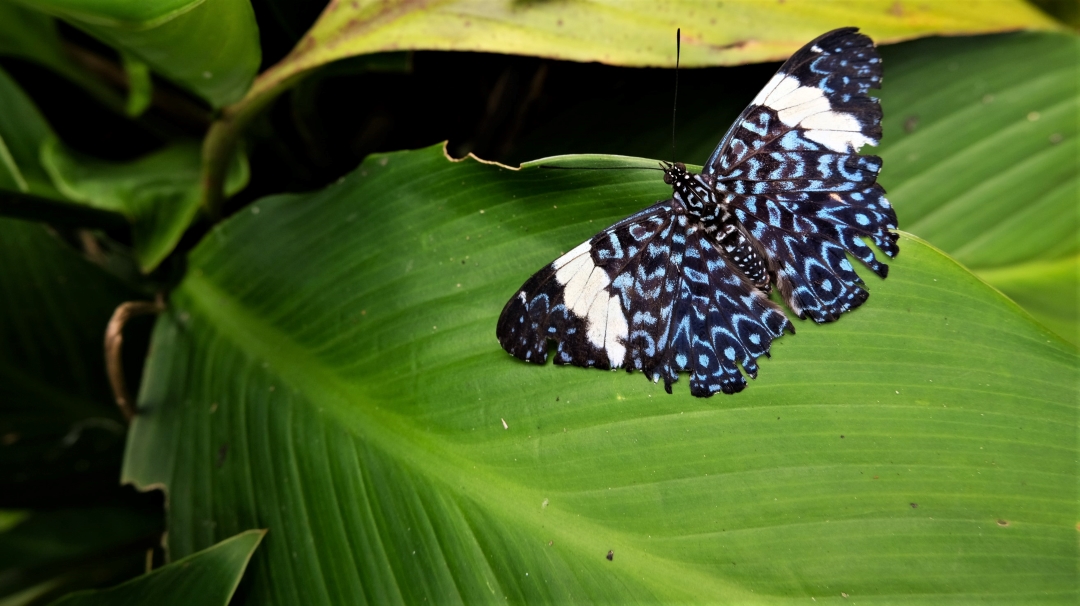
Amazoonico Animal Rescue Centre
The animal rescue centre, Amazoonico, is located along the river banks and can be easily reached by motorised canoe from Ahuano or any of the Amazon lodges in this area. It is one of the most highly regarded conservation projects in the Amazon and is staffed by volunteers from around the world. We had a wonderful volunteer from Germany as our guide when we visited the project.
The animals here were previously held captive as ‘pets’ and have heartbreaking back stories. The animals here are brought to the project to rehabilitate them for release into the wild. However, there are a few animal which are not able to return to the wild due to their condition. Animals you may see at the project include tapirs, ocelots, macaws and monkeys.
All proceeds from visits to Amazoonico support the maintenance and reintegration of the animals to the wild. Proceeds from visitors are the only source of funding for the project.
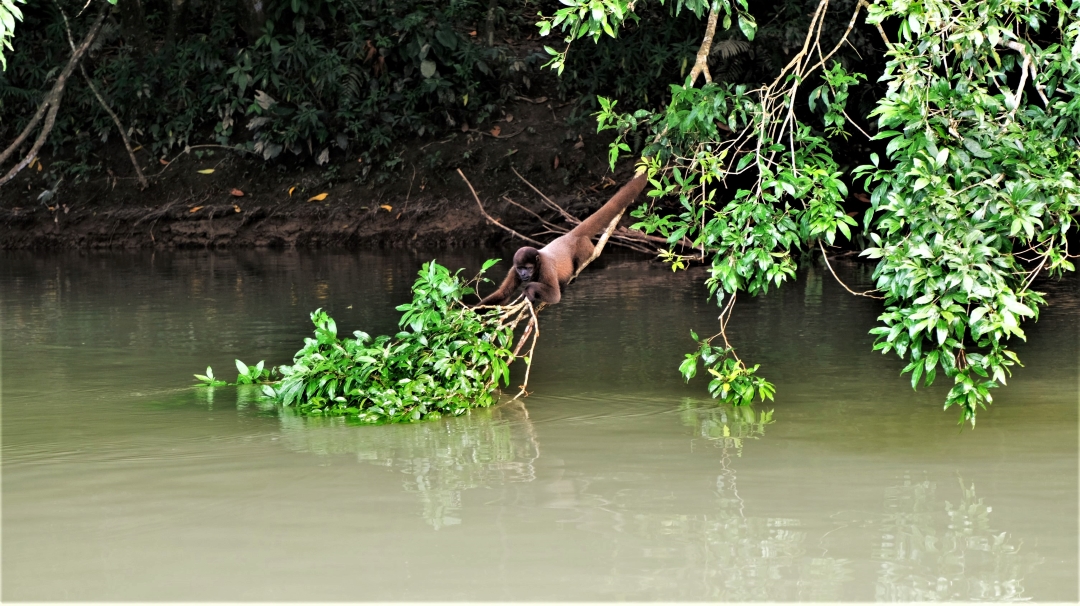
Wildlife in the Amazon Rainforest in Ecuador
The Napo River is a brilliantly bio-diverse area of the Amazon rainforest and you’ll have a significant chance of spotting wildlife here. The Napo River is a tributary river of the Amazon River and along its banks you can find rainforest inhabited by wildlife. Here’s a run down of some of the best wildlife you can see in Ecuador’s Amazon. We’ve included only the monkeys that we saw during our three-day stay at Gaia Lodge.
Monkeys
- Woolly Monkey – Woolly monkeys are medium-sized monkeys with brown to orange fur. They defend their territory against other monkeys aggressively. There’s a semi-wild colony of woolly monkeys on an island near the Amazoonico Rescue Centre.
- Squirrel Monkey – These adorable little monkeys live in huge groups of up to 50 animals. Wild populations of squirrel monkeys live along the Napo River.
- Spider Monkey – Spider monkeys are one of the largest monkeys you can see in the Amazon. They have prehensile tails, which means that their tail is as useful as a third arm. Spider monkeys are often hunted by humans and sold as pets. A spider monkey mother will fight to the death to protect her young, so the mothers are usually killed by hunters. You can spot spider monkeys in the wild along the Napo River.
- Gael’s Tamarin – These tiny monkeys are seen and heard from Gaia Lodge. They live in large groups and spend time foraging both on the ground and in the trees. There are several types of Tamarin in the Amazon.
Other Mammals
- Tapir – The tapir is the largest animal of the Amazon rainforest. Sadly, they are endangered due to hunting and deforestation. It takes a long time for a baby tapir to reach adulthood, which makes it hard for tapir populations to recover. You’re unlikely to see a tapir in the wild as they are nocturnal. You can see semi-wild tapirs at Amazoonico Rescue Centre.
- Jaguar – Jaguars are the largest type of cat to live in the Amazon. There are also ocelots and jagarundis. Jaguars are extremely rare and you are unlikely to see one in the wild. Jaguars are often killed by farmers as they have been known to eat a farmer’s livestock.
Reptiles
- Caiman – Adult caimans normally hunt at night. Locals swim in the rivers of the Amazon during the day, but they get out of the water before it gets dark! You can see juvenile caiman in the wild during the day at Isla Anaconda.
- Anaconda – The anaconda is the world’s largest snake. It’s not poisonous, but it can be dangerous to humans. You can see an anaconda at Amazoonico Rescue Centre. It’s unlikely to ever be released into the wild as – as you can imagine – the locals object to having this snake released near their village.
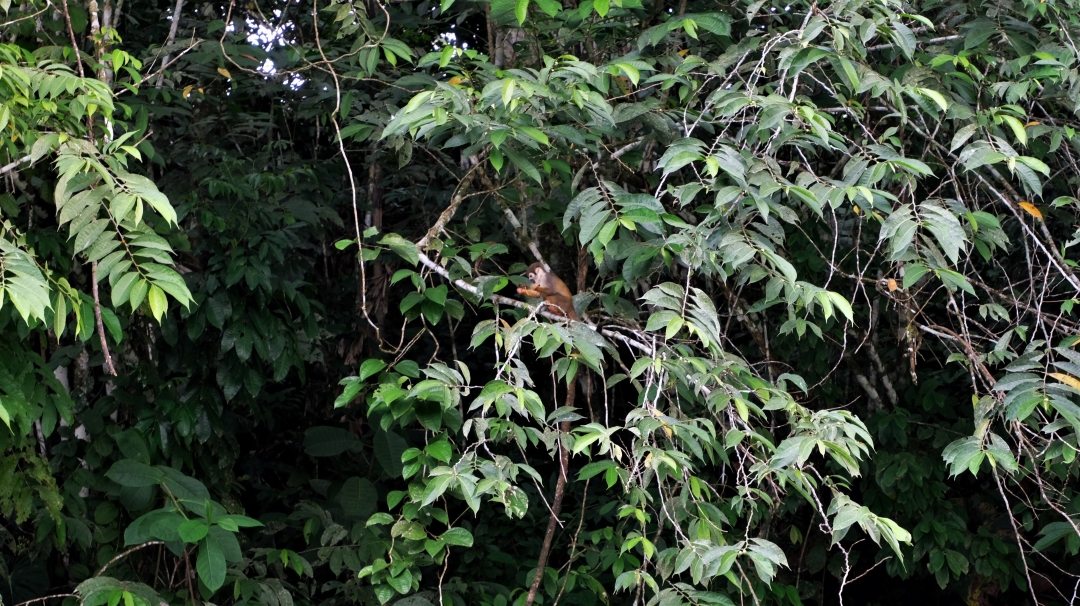
Best Amazon Lodge in Ecuador
There are a few different options for Amazon lodges in Ecuador but we loved our stay at Gaia Lodge. It was important for us to choose an Amazon lodge within easy distance to Quito so that we could take a weekend trip and avoid flying (which we avoid as much as possible for environmental reasons).
Tamarin monkeys parade through the trees right outside the front of the cabins at Gaia Lodge at sunrise and sunset. One evening, reading our books on the hammocks outside our cabin door we heard the pitter-patter of tiny feet running across our cabin roof, only to see tamarins leaping through the air from the cabin to the trees. It was an incredible sight.
After days-out in the jungle, come back to the lodge for a hot shower (not a given at Amazon lodges!) and a filling meal. The cooks and volunteers working in the kitchen created some great dishes, including quinoa soup, roasted potatoes with salsa, a passion fruit mousse that makes my mouth water thinking about it now and fresh fruit juices.
By night, fall asleep to the humming of cicadas and the soothing sounds of the jungle. The cabins at Gaia Lodge keep cool inside thanks to jungle-friendly design and building materials which contribute to passive cooling. There’s no need for air conditioning inside the cabins because of their design.
Amazon Lodge Prices
Prices of Amazon lodges vary substantially. The more rural you go, the more expensive the lodges can be and the higher the travel cost to reach them. We felt Gaia Lodge provided an excellent value for money option for budget and mid-range travellers in Ecuador.

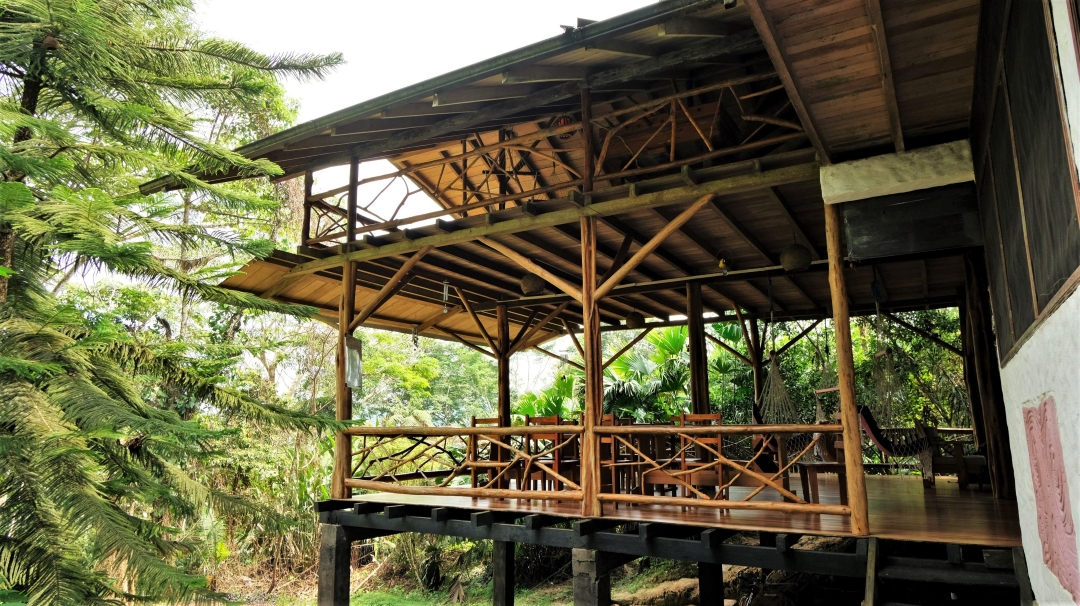
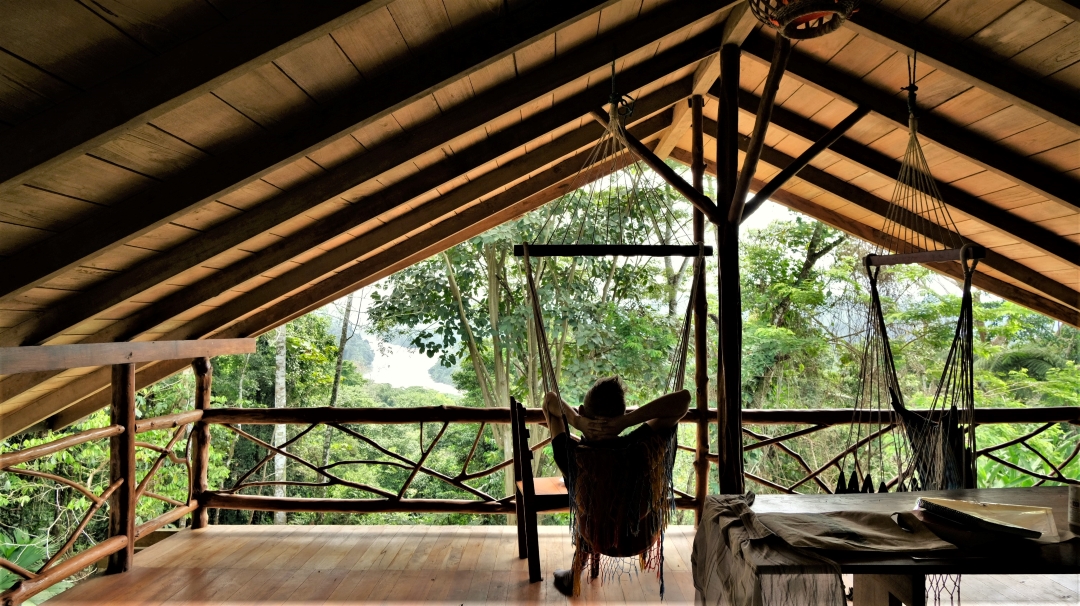
Ecuador Amazon Tours
Amazon tours in Ecuador range from 2 days / 1 night to 5 days / 4 nights or longer. We wouldn’t recommend going for less than 3 days / 2 nights. Otherwise the journey to the Amazon doesn’t feel worth it and it’s likely your itinerary would feel rushed.
The 3 or 4 day options give you enough time to have a full Amazon experience and spot some wildlife. If you want to really soak in jungle vibes and relax in the jungle, then 5+ days is the right amount of time for you.
Activities on Amazon tours vary depending on the lodge who you book through. We read a lot of Amazon tour itineraries before opting for Gaia Lodge who we felt had the best itinerary offering for a 3 days / 2 nights trip to the Amazon from Quito.
- 3 days / 2 nights – Our pick! We loved this length program for a full, long weekend itinerary including canoe ride, chocolate-making class, short jungle trek, indigenous community visit, butterfly farm visit and Amazoonico rescue centre visit.
- 4 days / 3 nights – For a real Amazon adventure! Additional activities on this itinerary include a night walk through the jungle to spot frogs and a jungle walk to the Rio Blanco waterfalls.
- 5 days / 4 nights – For the true Amazon experience! Additional activities on this itinerary includes an experience learning about gold panning and local fishing, a visit to Isla de los Pájaros (Bird Island) which is excellent for bird-lovers, a Shaman visit at an indigenous community to cleanse bad energy and a trip to the Selva Viva Reserve.
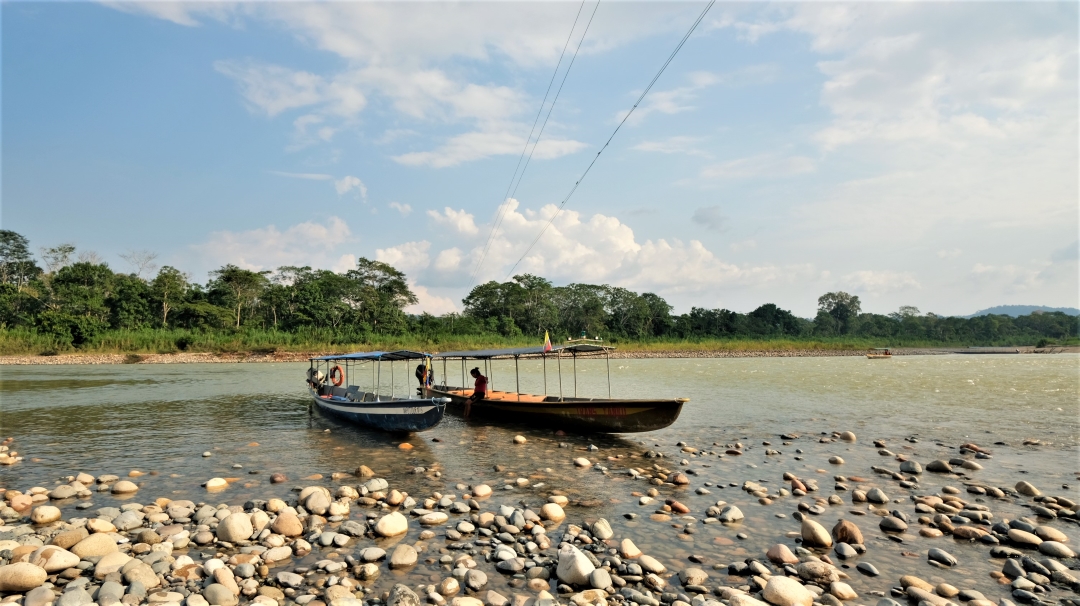
Volunteer in Ecuador’s Amazon Rainforest
Love the idea of visiting Ecuador’s Amazon rainforest? Amazingly, you can also volunteer in the Amazon!
Whilst staying at Gaia Lodge, we met two volunteers from Argentina who had found the opportunity through Worldpackers. They absolutely loved volunteering at Gaia and planned to stay a few months. They helped out around the lodge, running a chocolate making class we attended and assisting with meal prep, as well as working on the website and social media.
Volunteering is a great sustainable option for visiting the Amazon. Volunteers at Gaia Lodge stay 4-8 weeks. The length of the volunteering program here means volunteers have time to dedicate to connecting with the local community and the team working at the lodge, many of whom are Kichwa indigenous.
If you’re interested in volunteering in Ecuador’s Amazon rainforest or looking for other volunteering opportunities in Ecuador and South America, check out the Worldpacker’s website. Use my promo code: CHARLIEONTRAVEL for $20 off your membership.
You can find the Amazon volunteering opportunity at Gaia Lodge in the Amazon rainforest here.

How to Get From Quito to the Amazon
You can reach the Amazon rainforest within five hours from Quito. There are multiple options for reaching the Amazon, depending on the part of the Amazon you choose to visit. If you’re visiting an Amazon lodge which is located near Tena, you can travel by road. For more rural lodges, you may need to fly from Quito.
We stayed at an Amazon lodge near the town of Tena. Here are the three main options to reach this area of Ecuador’s Amazon:
Bus from Quito to Tena
Public buses from Quito to Tena run every hour from the Quitumbe terminal in the south. Buses cost $8. From Tena, there are buses every hour to Punta del Ahuano. Buses cost $1.50. Here you need to cross the river by canoe, which takes about a minute and then take a taxi to your lodge or otherwise meet a representative from your lodge at this point. The trip takes 5-6 hours.
Shuttle from Quito to Tena
A semi-private shuttle picks you up at your door in Quito and takes you to the river’s edge at Punta del Ahuano for $30 each way. Shuttle departures from Quito are 5:00AM and 5:00PM (Mon-Fri) and 6:00AM and 5:00PM (Sat-Sun). For the return leg shuttle depart from Ahuano at 3:45AM and 3:45PM (Mon-Fri) and 4:45AM and 3:45PM (Sat-Sun). You’ll need to take a 1-minute boat to cross the river and then a taxi to your lodge or otherwise meet a representative from your lodge at this point. Your lodge can usually book the shuttle for you.
Private Transfer from Quito to Tena
A private transfer to most lodges direct from Quito or Mariscal Sucre airport is possible to organise. The transfer departs any time before 5PM but cannot depart after this time due to night time road closures on the route to the Amazon due to landslides. A private transfer usually costs around $150 with a maximum of 4 people. The journey takes approximately 4 hours. Your lodge can usually book the private transfer for you.
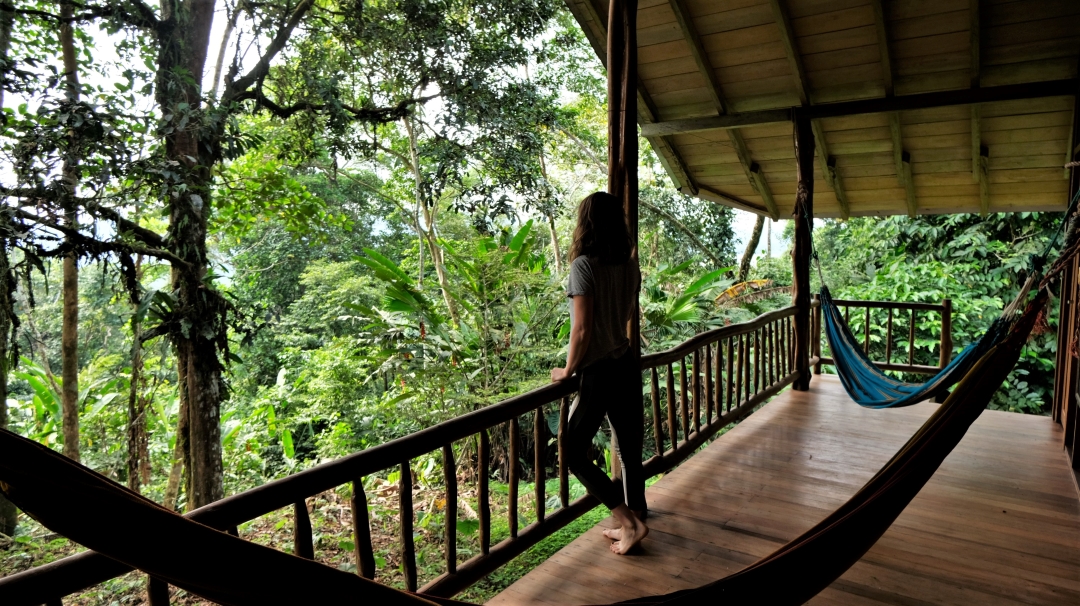
What To Bring to the Amazon Rainforest
The weather in the Amazon rainforest can vary. It’s likely you’ll experience humid, muggy weather with some rain showers. Here’s our recommended kit list for an Amazon rainforest trip:
- Long trousers – mosquito bites are common so it’s better to keep you legs covered.
- T-shirts or shirts.
- Light rain jacket – rain showers are common but due to the warmth and humidity you won’t want a padded jacket.
- Hiking boots – recommended for jungle hikes, although your lodge may provide you with welly boots. A decent pair of trainers would also be fine unless you’re doing a longer hike.
- Sandals – recommended for walking around your lodge. Many lodges have a no-shoe policy indoors so you’re often taking your shoes on and off.
- Sun hat or cap – even when cloudy, you’ll want to protect your face from the sun.
- Sunglasses.
- Day backpack – to carry water and your essentials.
- Water bottle.
- Mosquito repellent.
- Sun protection.
- Camera.
Packing for a longer trip? Read our full travel packing list here.
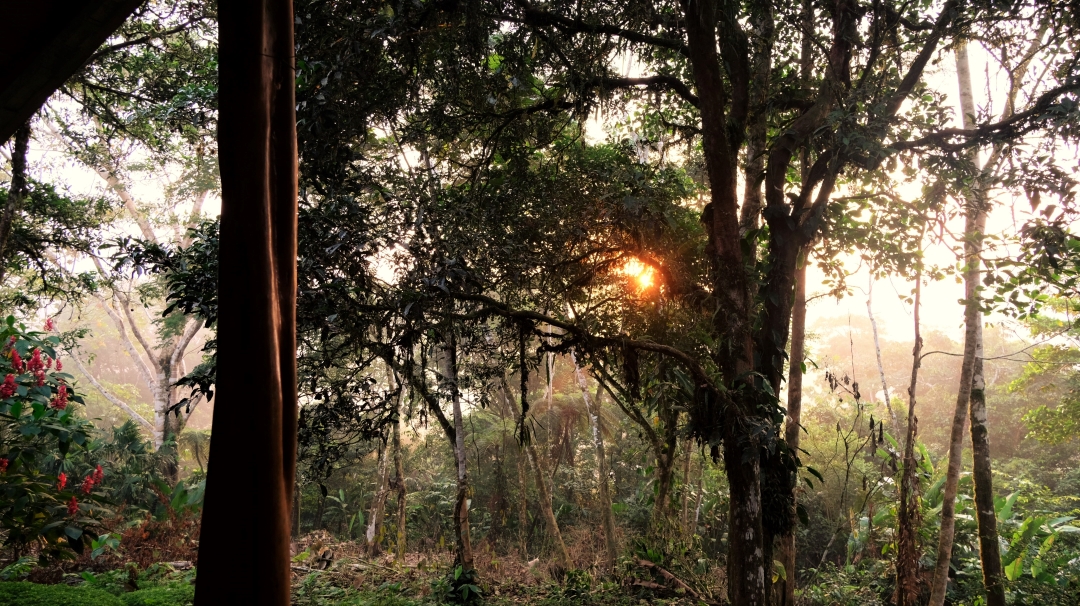
This blog post was written in collaboration with Gaia Lodge and Worldpackers, who kindly invited us to visit the lodge, meet the Worldpackers volunteers there and explore Ecuador’s Amazon Rainforest.
